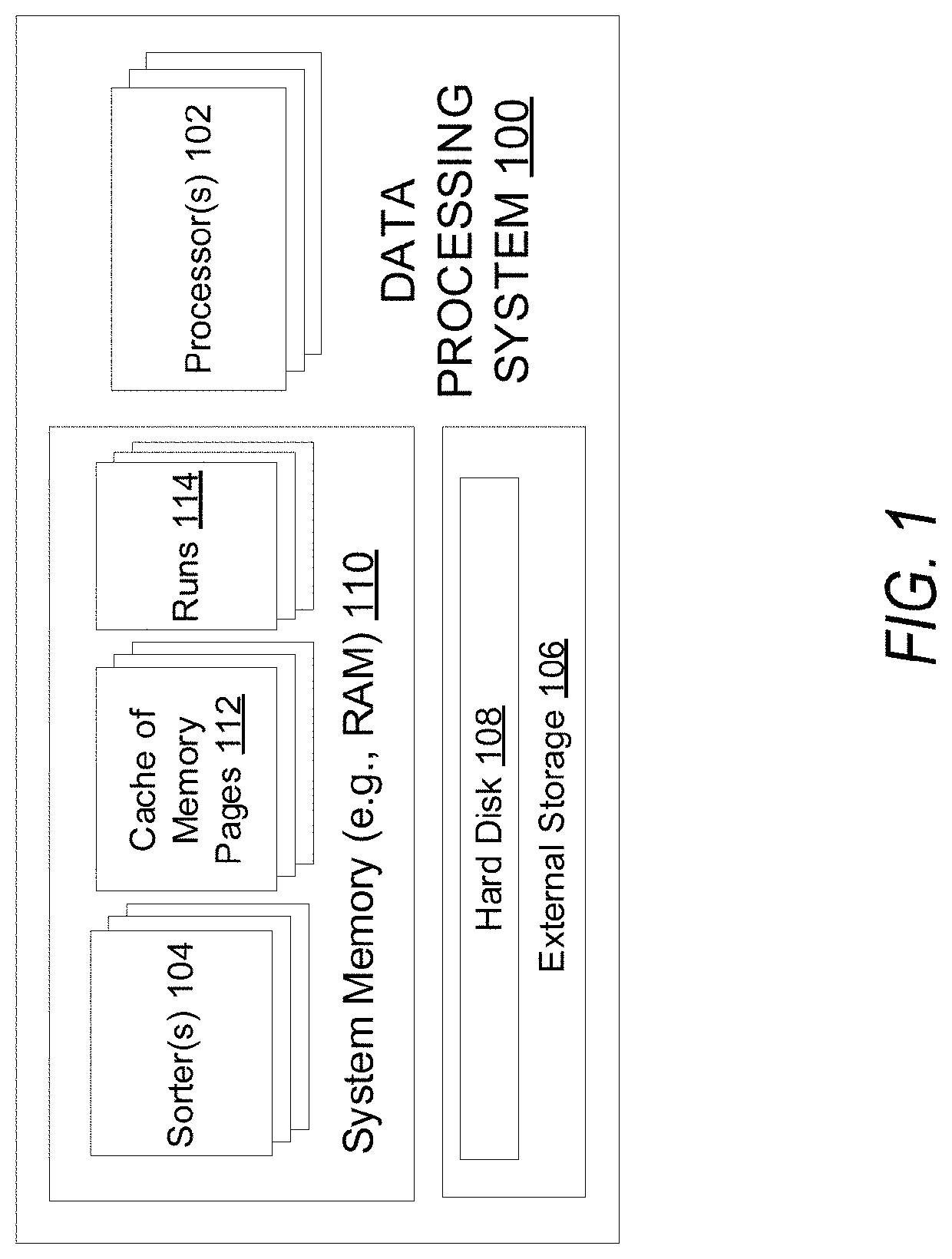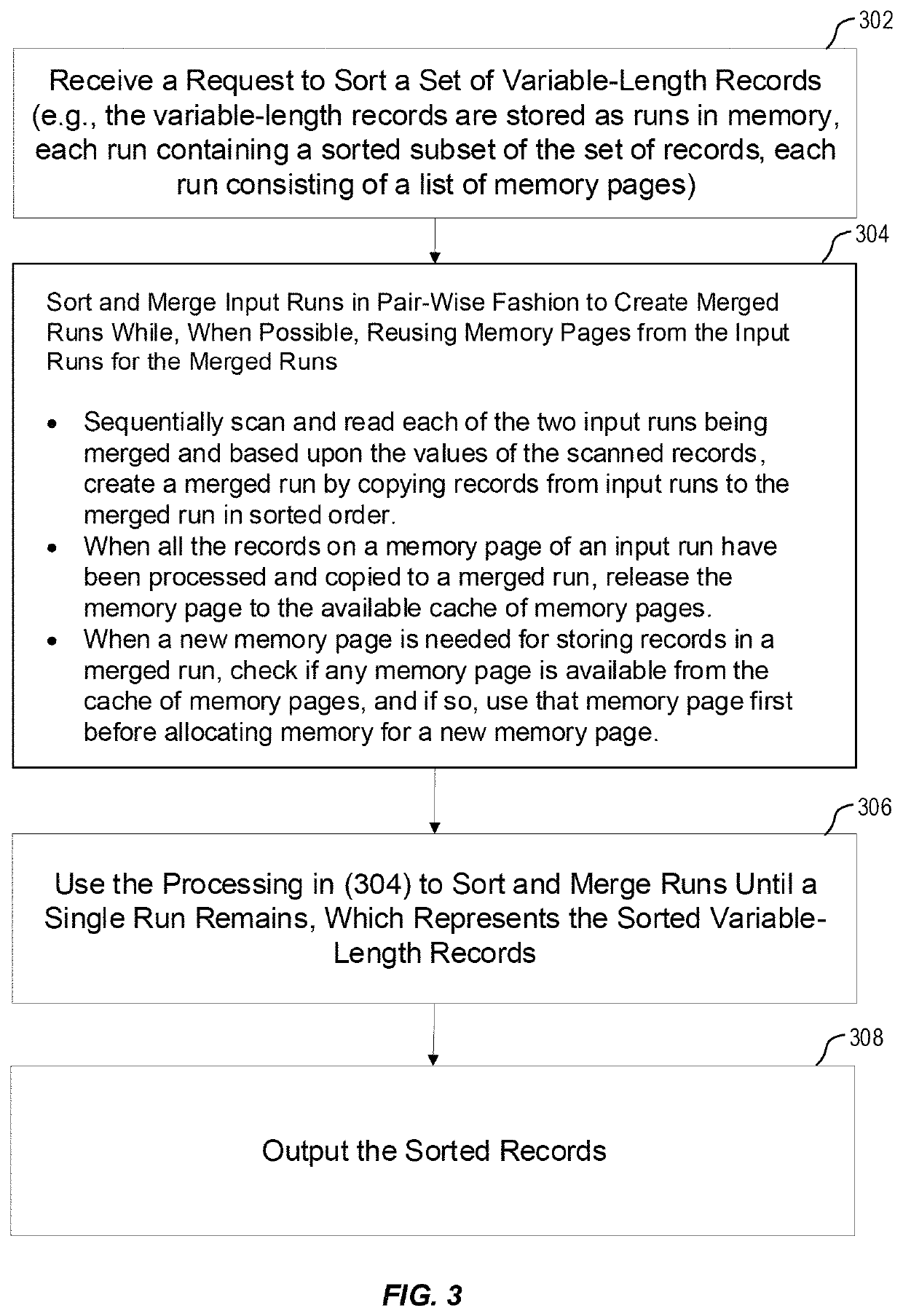Optimized sorting of variable-length records
a variable-length record and sorting technology, applied in the field of optimizing sorting of variable-length records, can solve the problems of cumbersome implementation of common sorting approach of swapping elements, heavy memory footprint of fixed-length records, and difficulty in generating sorted merged runs, so as to improve processing speed, improve efficiency, and reduce the amount of additional memory required to generate a sorted merged run
- Summary
- Abstract
- Description
- Claims
- Application Information
AI Technical Summary
Benefits of technology
Problems solved by technology
Method used
Image
Examples
Embodiment Construction
[0027]In the following description, for the purposes of explanation, specific details are set forth in order to provide a thorough understanding of the embodiments described in this application. However, it will be apparent that various embodiments may be practiced without these specific details. The figures and description are not intended to be restrictive. The word “exemplary” is used herein to mean “serving as an example, instance, or illustration.” Any embodiment or design described herein as “exemplary” is not necessarily to be construed as preferred or advantageous over other embodiments or designs.
[0028]Systems depicted in some of the figures may be provided in various configurations. In certain embodiments, the systems may be configured as a distributed system where one or more components of the system are distributed across one or more networks in a cloud computing system. In certain embodiments, the systems may be configured to operate in virtual or non-virtual environmen...
PUM
 Login to View More
Login to View More Abstract
Description
Claims
Application Information
 Login to View More
Login to View More - R&D
- Intellectual Property
- Life Sciences
- Materials
- Tech Scout
- Unparalleled Data Quality
- Higher Quality Content
- 60% Fewer Hallucinations
Browse by: Latest US Patents, China's latest patents, Technical Efficacy Thesaurus, Application Domain, Technology Topic, Popular Technical Reports.
© 2025 PatSnap. All rights reserved.Legal|Privacy policy|Modern Slavery Act Transparency Statement|Sitemap|About US| Contact US: help@patsnap.com



